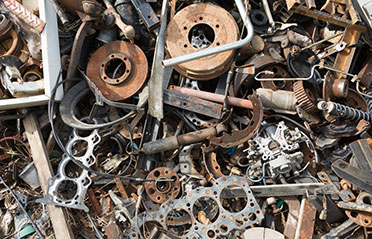All-New Production Line for...
Sutton Stoners
A simple matter of equilibrium…that’s the secret of the Stoner. Using the principle of stratification in a fluidized product bed, the Stoner has the special property of retaining an inventory of heavy fraction to prevent loss of product with rejects. Named for its original application, the Stoner was developed over 50 years ago to meet the special needs of flour mills requiring the removal of stones, metal and glass, which could not be removed by screening, from wheat.
Sutton Stoner Separation Applications
Strictly a two-way separator, the Stoner removes a small amount of heavy material from large amounts of light, producing a clean, heavy concentrate without product loss. The Stoner differs from the Fluidized-Bed-Separator in that it cannot produce a clean product if particles of intermediate characteristics with respect to size, shape, or density are present. Whereas the Separator will classify these intermediates in a middling fraction, the Stoner does not have this capability.
Contact Triple/SForm / Function
The material is fed onto a flat, porous deck which vibrates with a straight-line reciprocating motion. Unlike the Separator, the Stoner deck slopes in one direction only. Heavy particles sink to the bottom of the stratified bed and are conveyed upward to the reservoir behind the discharge throat. The light product particles, lifted by the fluidizing air, flow down slope to the discharge spout at the lower end. The deck narrows toward the reject discharge throat to concentrate an inventory of heavy particles. This concentration, augmented by the resistance of the hinged gate show, causes the heavy particles to stay on the deck much longer than the light product particles.
The heavy reject pool, fluidized by both vibration and airflow, displaces the light product particles toward its lower boundary, thereby preventing loss of product with heavy rejects. By ejecting the heavy particles through the discharge throat at the same rate at which they enter with the feed, the Stoner maintains a constant inventory in the reject pool. Stoners work best in applications where the two components of the feed are sharply different in density but a like in size and shape, and where the heavy material is a relatively small percentage of the feed.
The original flour mill application meets these conditions because the wheat is closely sized in cleaning operations upstream from the Stoner. Inefficient screening, however, impairs Stoner performance. The fine sand or stone particles, if not eliminated through the sand screen, will not be rejected with heavy fraction, but will go on to the mill with the grain. Recovery of these finer particles of heavy reject material could be better with a Fluidized-Bed-Separator, which would return them with a middling fraction for re-screening.

Applications
So, why use a Stoner? For two reasons:
- Its capacity is greater per square foot of deck area.
- It has the ability to accumulate a pool of heavy rejects.
In the wheat cleaning application, the Separator, which lacks the ability to build a reject pool, cannot produce a clean reject due to the very small percentage of contamination in the incoming grain (between .002 and .005%). If the Separator were used in such an application, or in quality grading to remove undesirable light and heavy fractions, it would only concentrate the rejects. A small Stoner would be needed to recover the product mixed with the reject concentrate from the Separator.
A major invention in dry separation equipment, the Stoner, or specialized versions of it, has solved such diverse separation problems as the removal of:
- Stones, metal and glass from oilseeds prior to crushing or cracking to prevent roll damage
- Heavy foreign material from grain, legumes, and peanuts destined for human consumption
- Peanut kernel fragments from waste hulls, after shelling, for oilstock recovery
- Stones from wood chips to prevent refiner plate damage, replacing wet washers
- Tramp copper from aluminum granules in mechanical scrap wire reclamation systems
- Glass from composted solid waste
- Non-ferrous metallic prills from foundry sands
- Coarse particles (shives) from wood flakes for particle board
- Nodular iron pyrites from ground clay for brick and tile

















